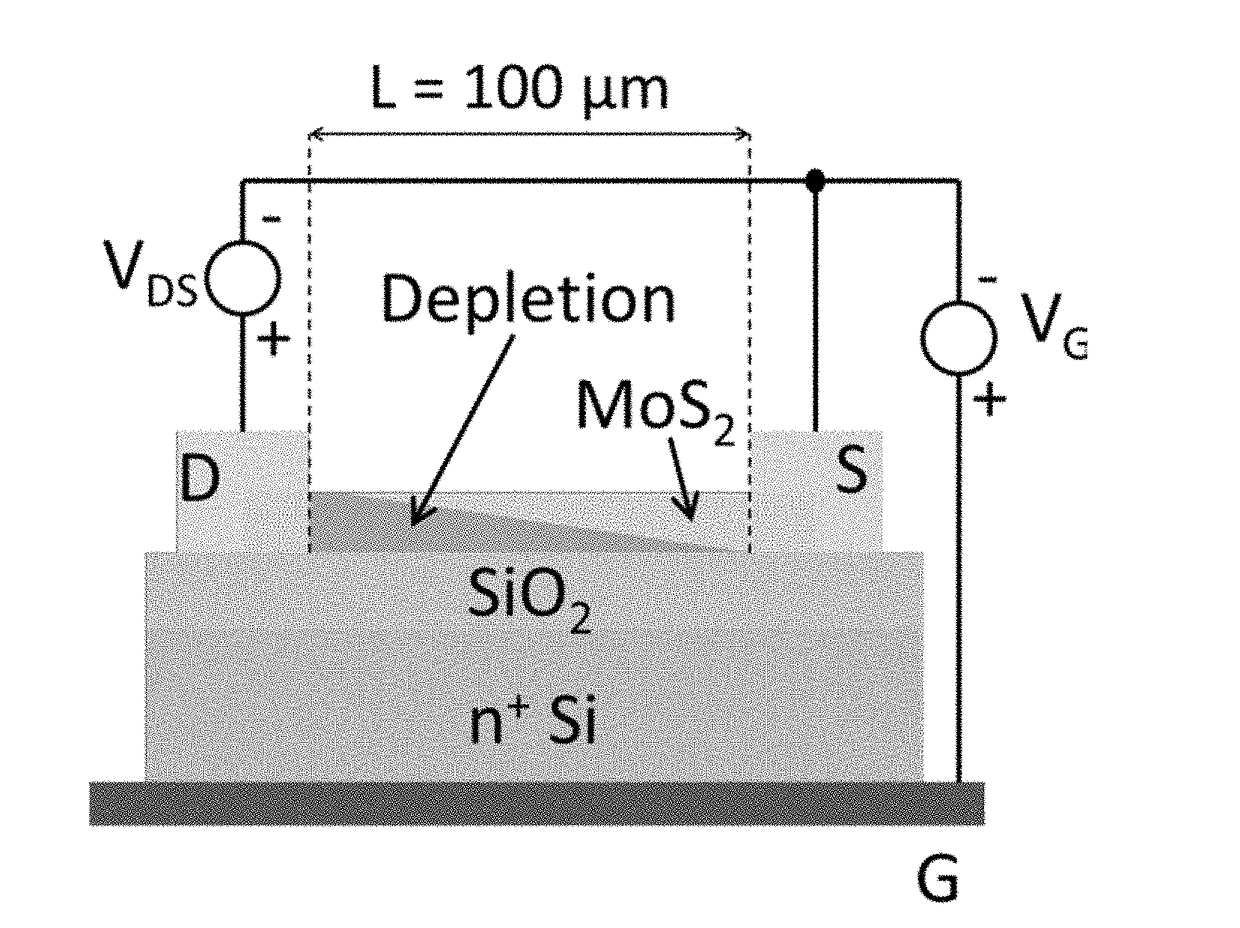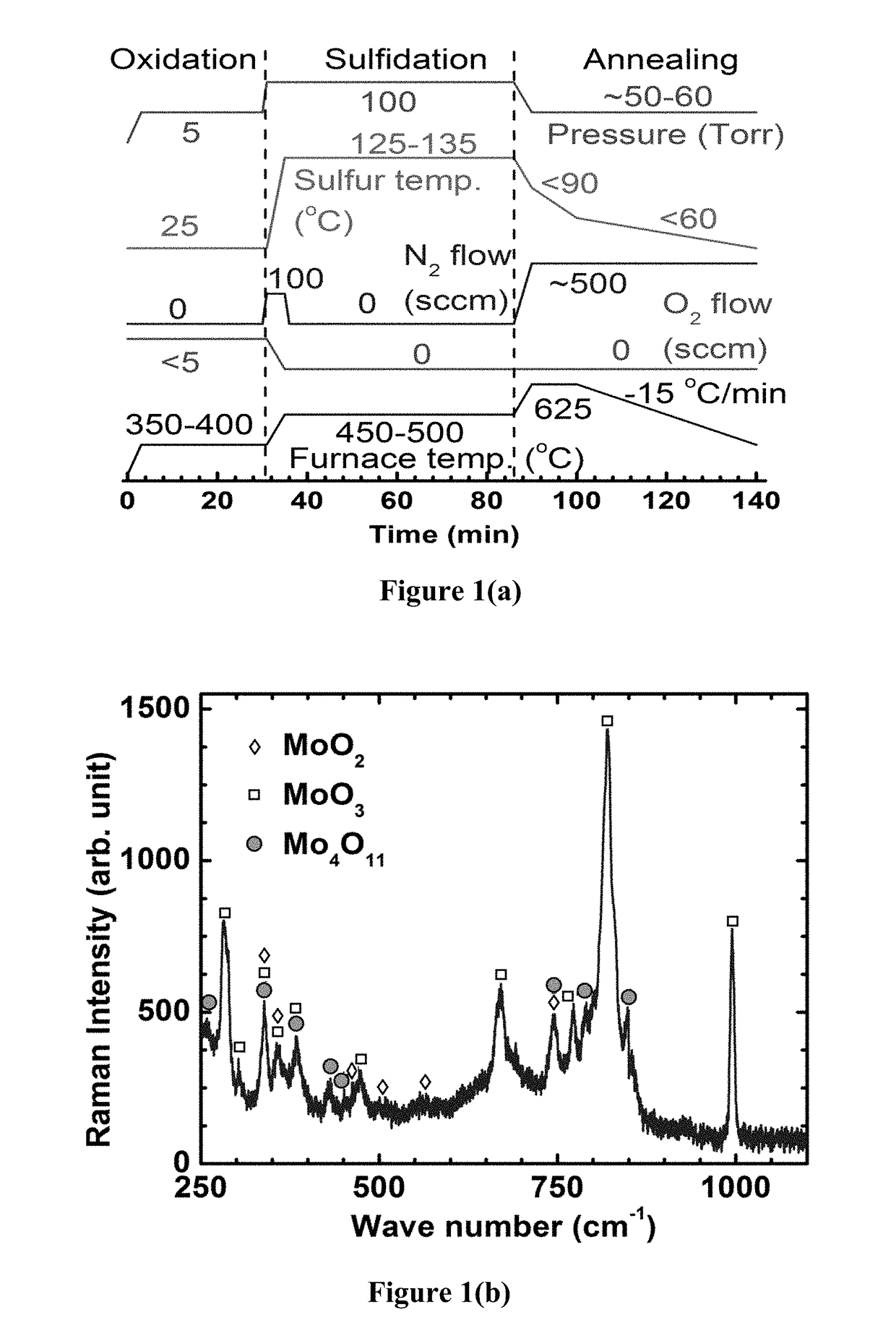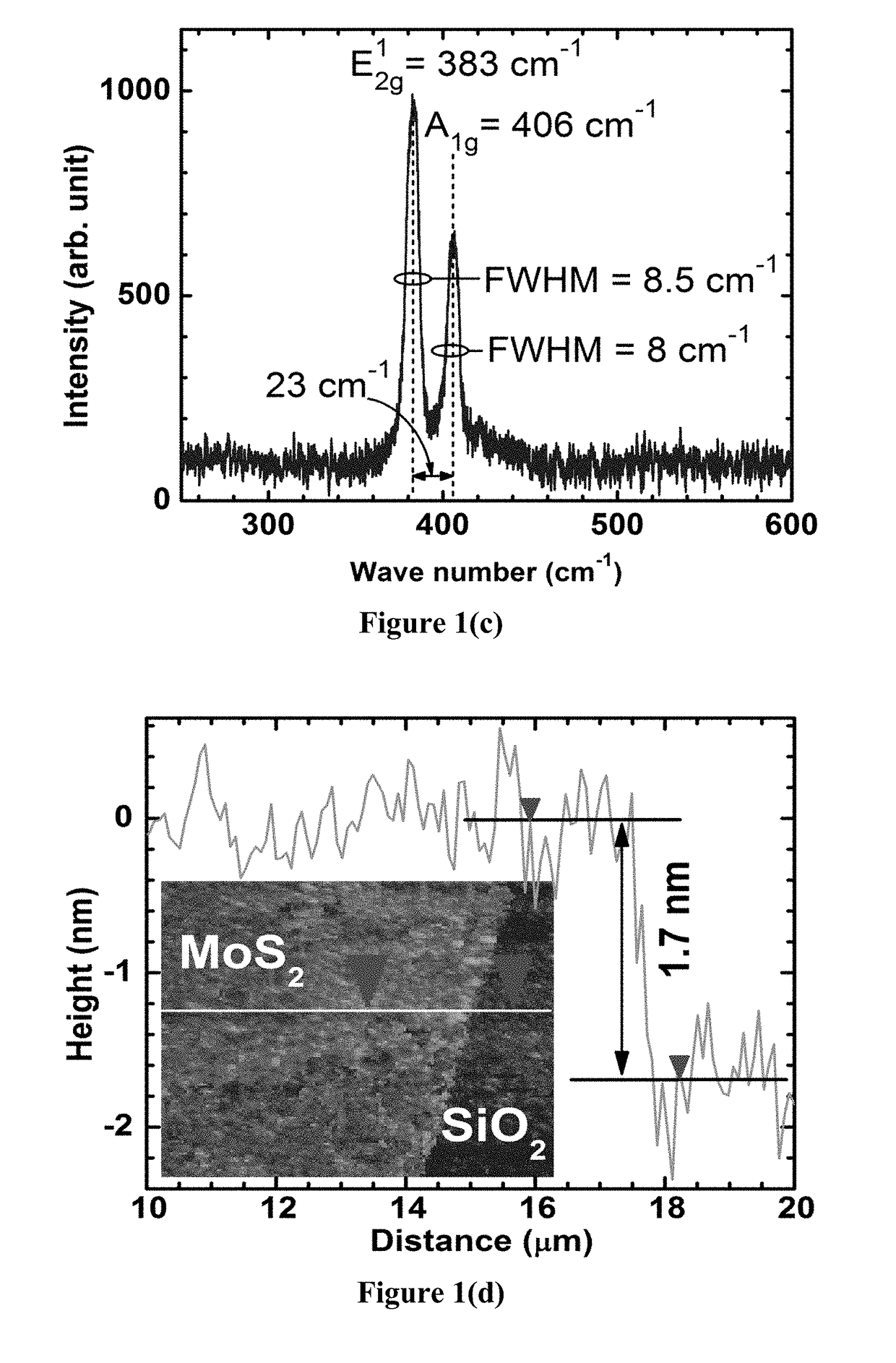Synthesis and Fabrication of Transition Metal Dichalcogenide Structures
- Summary
- Abstract
- Description
- Claims
- Application Information
AI Technical Summary
Benefits of technology
Problems solved by technology
Method used
Image
Examples
example 1
[0059]Top-down growth techniques were utilized for synthesizing large area molybdenum disulfide (MoS2) transistors of a few monolayers in thickness. Patterns of molybdenum were oxidized to form mixtures of volatile molybdenum-oxides and the resulting films were thinned down by partial sublimation at a low temperature. Sulfur vapor was then introduced to the system to sulfidize the volatile oxides to molybdenum disulfide, also at a relatively low temperature (2 with diffused sulfur atoms, which allows the as-grown films to be used without transferring to different substrates, while maintaining high performance transistor characteristics on SiO2 substrates.
[0060]The high quality MoS2 samples were grown on 50 nm SiO2 / n+-Si commercial substrates. A lithographic process was first performed to open up sub-mm sized rectangular windows on a clean SiO2 / Si sample and a layer of molybdenum (Mo) was applied, followed by the electron beam evaporation and lift-off of a 7-10 nm thick layer of Mo. ...
example 2
[0076]Molybdenum disulfide (MoS2) and other TMDs are analogous to graphene, a two-dimensional layer of carbon atoms in a graphite-like hexagonal lattice. The recent interest in the TMDs stemmed since the discovery of graphene and its exceptional properties, such as extremely high mobility, very high thermal conductivity, surface sensitivity to various molecules, etc. However, graphene based field effect transistors (FETs) perform poorly in terms of switching, owing to its zero band gap. It has been shown by many reports that forming a heterojunction with graphene and another semiconductor can often alleviate this particular problem, while adding a number of other benefits due to the presence of a non-negligible Schottky barrier at the hetero-interface. When the other semiconductor, used with graphene to form the heterojunction, is also a two-dimensional material, there is essentially a 2D heterojunction in place. A key property of these 2D heterojunctions is that each constituent of...
example 3
[0090]In this example, the graphene / MoS2 barristor from EXAMPLE 2 will be further investigated with a focus on sensing applications of this device. While graphene is inherently sensitive to many chemical species, the sensitivity can be further enhanced by operating a graphene-based device in the exponential (i.e. subthreshold) regime of the transfer curve. This can be achieved conveniently by a barristor device, where a gate bias can be used to tune the barrier height and hence the transport mechanism. Since high barrier height modulation has been shown, it is expected that a high degree of tunability can also be achieved in the sensitivity of the graphene / MoS2 barristor device.
[0091]The sensing experiments were done in a small chamber, which housed the wire-bonded sample. The chamber had an inlet and an outlet. Wires from the device were taken out through a small opening near the outlet, which was stuffed with TEFLON® tape. A roughing pump along with a valve (V3 in FIG. 9) was conn...
PUM
 Login to View More
Login to View More Abstract
Description
Claims
Application Information
 Login to View More
Login to View More - R&D
- Intellectual Property
- Life Sciences
- Materials
- Tech Scout
- Unparalleled Data Quality
- Higher Quality Content
- 60% Fewer Hallucinations
Browse by: Latest US Patents, China's latest patents, Technical Efficacy Thesaurus, Application Domain, Technology Topic, Popular Technical Reports.
© 2025 PatSnap. All rights reserved.Legal|Privacy policy|Modern Slavery Act Transparency Statement|Sitemap|About US| Contact US: help@patsnap.com



